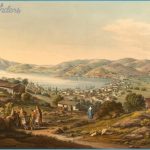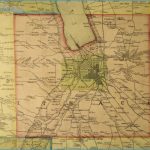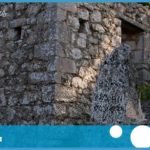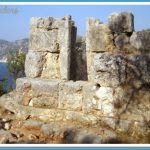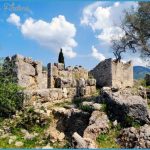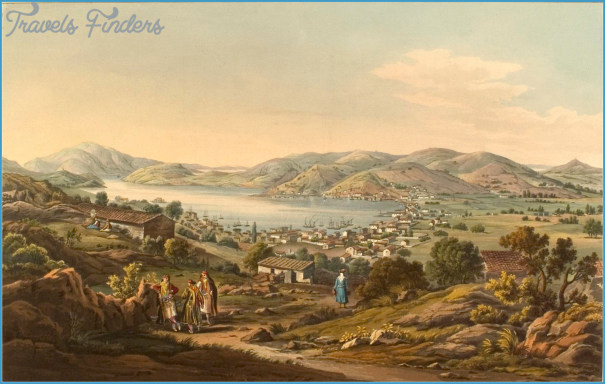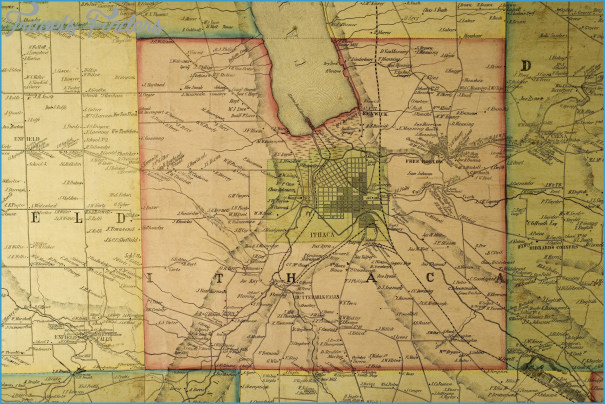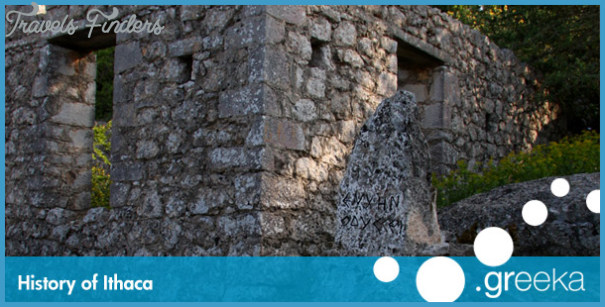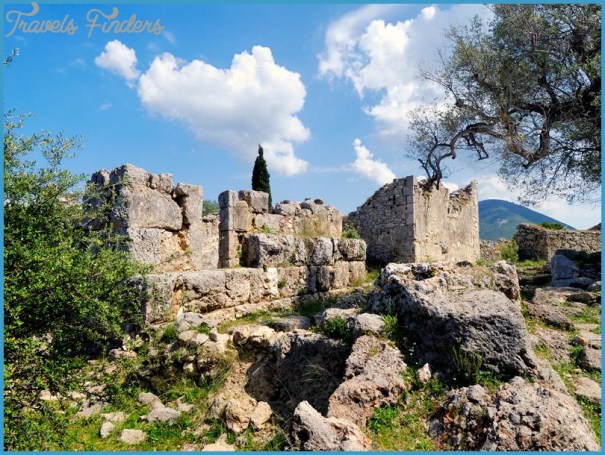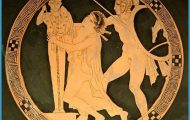There are two Ithacas – one the modern island of Ithaki, the other the Ithaca of the Odyssey. Many have tried to reconcile them, for, if Mycenae and Troy really existed, why not Odysseus palace at Ithaca?
Archaeological and topographical surveys show some similarities between Homer’s descriptions and Ithaki. Thus in the south of the island, the bay where the Phaeacians put Odysseus ashore corresponds to Dexia Bay, while Eumaeus hut may be located on the Marathia Plateau above Raven’s Crag. Two sites in the north of Ithaki claim to be Odysseus palace – Alalkomenai and Platrithias. Both have Mycenaean remains, but nothing on the scale of mainland palaces.
At Polis Bay in northwest Ithaki in the 1930s the remains of twelve tripod-cauldrons from the ninth or eighth century bc were found in a collapsed cave. Decorated with Geometric motifs, their handles were topped by miniature dogs and horses. Sixty years earlier, another tripod-cauldron had been uncovered, making a total of thirteen – the number Alcinous gave Odysseus. Also found was a second- or first-century bc fragmentary terracotta mask inscribed, ‘A Prayer to Odysseus’. Probably the cave was associated with a hero cult to Odysseus from at least 800 bc. Some even suggest that Homer heard of the dedicated tripods, and wove them into his narrative.
Ithaca in History & Today Photo Gallery
Unlike Homer’s Ithaca, however, Ithaki is not the ‘furthest out towards the sunset of the Ionian Islands. A host of other candidates are suggested, including Lefkas – whose champions explain its location east of Ithaki by claiming that Homer meant it was ‘closest to the mainland – and Paliki, which is, indeed, the furthest west. In antiquity Ithaca’s identity worried Strabo, who was confused as to whether it was Ithaki or Lefkas.
The Odyssey’s wider geography was even more problematic. Herodotus attempted to anchor episodes in real locations – the Land of the Lotus Eaters in western Libya, for example – and Apollodorus states that ‘some interpret the Odyssey as an account of a voyage round Sicily’. Scylla and Charybdis are still commonly sited in the Strait of Messina, while Scherie has been identified with Corfu. In the 1980s, Tim Severin’s voyage in a reconstruction of a Bronze Age ship placed the first adventures in North Africa and Crete and many of the remainder in and around the Ionian Islands.
While the identification game is fun, it disregards the fact that the Odyssey is not history but a blend of mythology, sailors yarns and heroic epic. It can also be read as a ‘parable’, a journey from life to death and subsequent rebirth, an odyssey that is as much spiritual as geographical. The early twentieth-century poet Constantine Cavafy expressed it best in his poem ‘Ithaca’, concluding: Keep Ithaca always in your mind. Your goal is to reach it. But do not hurry your voyage – better to let it last for many years, to drop anchor only when you are old, rich with experiences, not expecting that Ithaca will give you wealth. Ithaca has furnished the delightful voyage. Without her you would never have set out. But she has nothing else to give you. And if you find her poor, Ithaca has not deceived you. You have gained great wisdom You have experienced so much.
Surely by now you must know what Ithacas mean.
In Classical times Ithaki was poor and insignificant. The island was taken by Sicilian Normans in 1185, then ravaged by Turks in 1479 and resettled by Venetians in 1504. Together with the other Ionian islands it became part of Greece only in 1864, when it was ceded by the British, who had ruled it for fifty years.

